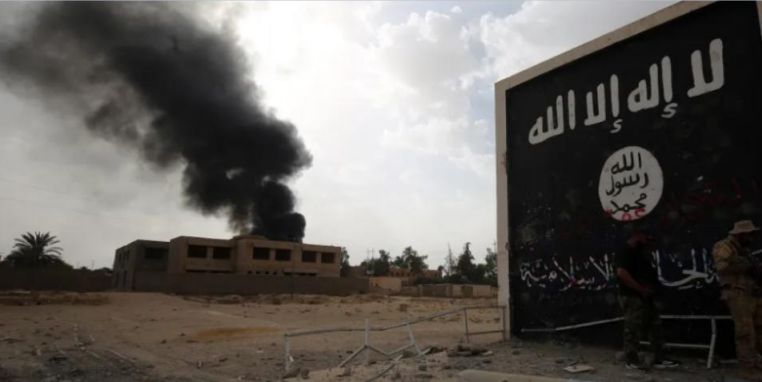By Eric Vandenbroeck and co-workers
The Islamic State is a Franchise Now
In the early morning
hours of New Year’s Day, a 42-year-old U.S. Army veteran named Shamsud-Din Jabbar drove through a crowd of revelers in the
French Quarter of New Orleans, killing at least 14 and injuring dozens more.
Jabbar had an Islamic State flag on the rented vehicle and reportedly recorded
a video pledging his allegiance to the jihadi group.
The FBI is likely
conducting an assessment of Jabbar’s electronics to see what the digital
forensics reveal: what kind of Islamic State propaganda was he imbibing; how
frequently was he reading Islamic State posts; did he download guides to make
improvised explosive devices, or IEDs; which social media platforms did he
visit; and was he in touch with any actual Islamic State operatives who may
have served as a cyber-coach or virtual entrepreneur in the attack.

In the past year,
almost all thwarted and successful Islamic State external operations—meaning
attacks outside the perimeter of the group’s various provinces—have been inspired by the group, rather than enabled or directed by
it. This is a stunning feat: The Islamic State has effectively leveraged its
brand worldwide to inspire violence and carnage far away from the territories
it controls, without even extending basic support to the attackers.
This underscores the
crucial role of technologies such as social media
and communication platforms in
providing access to radicalizing content, as well as the knowledge and
technical know-how necessary to orchestrate attacks. It also implies, however,
that many such plots depend on rudimentary, low-tech methods—such as vehicle
ramming—that capitalize on the simplicity and brutal effectiveness of
forceful tactics.
So, how can these
attacks be thwarted, and what are ways to stem the effective franchising of the
Islamic State worldwide?
The adoption of
advanced technology by terrorists—from IEDs to unmanned aerial vehicles—and the
continued, highly successful use of simple attack measures—from vehicle ramming to stabbing attacks—indicate the
need for a more nuanced understanding of why terrorists opt for certain
technologies to commit attacks over others. In a case from last November, a
far-right extremist in the United States planned to attack an energy
facility substation with
a drone rigged with explosives—a stark contrast with what happened in New
Orleans.

A U.S. Army soldier looks out from a CH-47 Chinook
helicopter near Al-Tanf Garrison, Syria.
Additionally, the
barrier to entry is low and only requires a driver’s license. The symbolic
aspect of vehicle ramming attacks is also important: An everyday utility object
can cause mass carnage at any moment, with almost no preparation necessary.
These attacks are not unique to jihadi groups. A far-right extremist used a
vehicle during the 2017 Unite the Right rally in Charlottesville, Virginia, to
ram into a crowd of counter-protesters, killing one. Just weeks ago, a Saudi
national living in Germany, motivated by a strange brew of anti-Islamic and
far-right ideas, used a car to attack a Christmas market southwest of Berlin.
The Islamic State has
long relied on inspiring its supporters to conduct vehicle attacks, following
an explicit admonition to do so by its former No. 2, Abu Mohammad al-Adnani,
who once exhorted Islamic State supporters to conduct attacks against Westerners
with any means at their disposal. “Smash his head with a rock, or slaughter him
with a knife, or run him over with your car, or throw him down from a high
place, or choke him, or poison him,” Adnani urged more than a decade ago. These brute-force
tactics remain highly successful and hard to detect in the planning stages.
Counterterrorism can be
a thankless profession. When plots are disrupted or terrorist cells rolled up,
it may make the news cycle momentarily, but few people give much thought to
what could have been if an attack had succeeded. And the FBI, CIA, and other
agencies focused on counterterrorism have a legitimately impressive record in
the generational struggle against groups such as al Qaeda, the Islamic State,
and their various affiliates, franchises, and regional.
Vehicle ramming
attacks, requiring little to no planning, have become one of the most
successful tactics in Islamic State-inspired terrorism due to a combination of
practical and ideological factors. They have been used in attacks inspired and
enabled by the group worldwide, including in Barcelona, Berlin, London, New
York City, Nice, and Stockholm. Vehicle ramming attacks are more likely to
succeed because they are incredibly difficult to detect in the planning phase
and are equally hard and resource-intensive to mitigate.
In terms of accessibility,
cars are readily available, and through rentals and vehicle-sharing platforms,
only limited resources are necessary to conduct such an attack. In what the FBI
says is merely a coincidence, the New Orleans attacker and a U.S. Army Special
Forces soldier who shot and killed himself before the Tesla Cybertruck
he was in exploded on Jan. 1 in Las Vegas both used the peer-to-peer rental app
Turo to obtain their vehicles.
For updates click hompage here